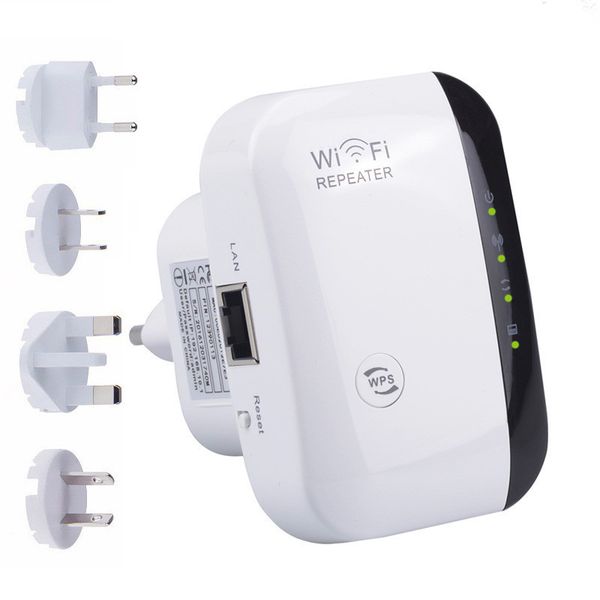
The Billion-Dollar Boom in Wi‑Fi as a Service
Let’s be honest — when was the last time you really thought about how your Wi‑Fi works behind the scenes? Probably never… until it stops working. That moment of panic during a video call, a guest check-in, or when a payment terminal disconnects — suddenly, reliable Wi‑Fi is everything. Wi‑Fi as a Service
Now imagine you’re running a hotel, airport terminal, or train station. You’re not just offering Wi‑Fi — you’re offering an experience. Visitors expect it to be fast, seamless, and secure, no matter where they are on your premises. And when it’s not? That frustration reflects directly on your brand.
This is exactly why Wi‑Fi as a Service (WaaS) is taking off.
WaaS is the modern solution to an old problem: it replaces traditional, hardware-heavy networks with a cloud-based subscription model. You don’t have to buy expensive routers, manage updates, or worry about downtime. Instead, a provider installs everything, monitors performance 24/7, ensures security, and keeps it all running — while you focus on running your business.
And the industry is clearly seeing the benefits. According to a new MarketsandMarkets report, the WaaS market is set to grow from USD 9.27 billion in 2025 to a whopping USD 21.96 billion by 2030, at a CAGR of 18.8%.
Let’s explore why that growth is happening, who’s driving it — and what it means for your travel, hospitality, or roaming-focused business.
What Is Wi‑Fi as a Service (WaaS)?
Think of WaaS like Netflix, but for your network. You pay a regular fee and everything — hardware, software, updates, support — is included. The infrastructure is managed remotely via the cloud, which means less pressure on your IT team, faster deployments, and no surprise upgrade costs. It’s scalable, secure, and always up to date.
For roaming and travel environments — think hotels, airports, cruise terminals, train stations — this is a game changer. WaaS ensures a consistently high-quality connection, even as users come and go across locations, floors, or even countries.
Market Size and Growth Trajectory
Brace yourself: the global Wi‑Fi as a Service market is projected to grow from USD 9.27 billion in 2025 to USD 21.96 billion by 2030, reflecting a healthy CAGR of 18.8% over that period.
To put that in context, earlier estimates (from 2021) suggested a value around USD 4–4.6 billion, with slightly lower growth projections. Current data supersedes that, placing 2025’s market size close to USD 9.3 billion.
Why the Sudden Surge?
1. CapEx to OpEx: Budget-Friendly and Predictable
Organizations are ditching the large upfront costs of buying Wi‑Fi gear. Instead, they’re opting for subscription-based solutions that shift costs to operational expenditure. Predictable monthly pricing, no surprise hardware bills. That alone is a compelling pitch for many businesses.
2. Cloud Management = Peace of Mind
Centralized, remote monitoring means IT teams can spot, diagnose, and fix network issues — even across multiple locations — without dispatching someone on-site. Think real-time dashboards, automatic updates, and support handled by specialists.
3. Rising Demand for Seamless Connectivity
Roaming travelers expect fast, stable Wi‑Fi everywhere — not just in their room or gate area, but across entire properties or campuses. WaaS supports high device density and provides the ability to scale bandwidth based on peak usage (like check-in times or holiday rushes).
4. Explosion of Connected Devices (Hello IoT!)
With smartphones, wearables, cameras, sensors, smart TVs — every device wants a slice of Wi‑Fi. Businesses, smart cities, schools, healthcare facilities — everyone needs high-density and scalable wireless access. WaaS makes it seamless to support a growing ecosystem of connected gadgets.
5. Trends Driving Adoption: BYOD, Hybrid Work & Data Privacy
More employees using personal devices (BYOD/CYOD), plus hybrid work models, mean firms need secure, controlled Wi‑Fi environments. WaaS typically includes built-in security, access controls, and compliance support — ticking those boxes for enterprises.
6. Smart Cities & Public Connectivity Push
Governments and tourism boards are investing in smart infrastructure — and managed Wi‑Fi is a foundational piece. WaaS supports large public deployments and enables things like visitor analytics, foot traffic tracking, and personalized services.
Where WaaS Shines for Travel & Roaming
If you’re in the travel space — like we are at Alertify — here’s why WaaS is especially relevant:
- Hotels & Resorts: Guests expect flawless Wi‑Fi throughout the property. WaaS ensures you can deliver that without hiring an in-house networking team.
- Airports & Train Stations: High-traffic, transient environments benefit from high-capacity, self-healing networks that can be scaled seasonally or across new terminals.
- Cruise Lines & Ferries: Onboard connectivity and port-based networks can be managed remotely and adapted to itineraries and bandwidth requirements.
- Tourism Boards: Deploy public Wi‑Fi across visitor centers, historic sites, and downtown zones as part of your smart tourism initiative.
This isn’t just about connectivity — it’s about improving customer experience, gathering data, and staying competitive.
Who’s Winning in This Space?
The market includes a mix of big telcos and networking players. Highlighted names include:
- AT&T, Verizon, T‑Mobile (US)
- e& (UAE), Singtel (Singapore), Tata Communications (India)
- CommScope, Arista, TP-Link, Wifirst, Alcatel‑Lucent Enterprise, Jio, Spectra, Telstra, and more across Asia, Europe, and Oceania.
These companies offer WaaS either directly or via managed networking services — some combine it with broader cloud or edge services too.
How the Market Breaks Down
By Service Type:
- Professional services such as Wi‑Fi planning, deployment, and training dominate revenue now.
- But managed services (ongoing monitoring, support, maintenance) are growing fastest as organizations continue outsourcing operational needs.
By Enterprise Size:
- Small and Medium Enterprises (SMEs) are enthusiastic adopters — they lack deep in-house IT teams and love the simplicity of SaaS-style services.
- Large enterprises, with multi-site deployments and high density requirements, are also increasingly turning to WaaS for scalability and reliability.
By Region:
- North America leads today, driven by early adoption of cloud-managed networking and high demand in sectors like retail, healthcare, and finance.
- Asia-Pacific is the fastest-growing region — rising digitization in China, India, Japan, and smart city rollouts are fueling need.
What’s Next?
What’s shaping the future of this space?
🚀 Wi‑Fi 6, 6E & 7 Integration
New generations of Wi‑Fi — especially Wi‑Fi 6/6E and upcoming Wi‑Fi 7 — are enabling higher throughput, lower latency, and better handling of densely packed environments. WaaS providers are rapidly integrating this tech to deliver a superior experience in enterprise and public deployments.
🤖 AI-Enhanced Management
Expect more AI-driven automation: predictive maintenance, dynamic bandwidth optimization, anomaly detection. This reduces burden on support teams and boosts network performance.
🔐 Security & Compliance Become Table Stakes
With BYOD, hybrid work, and stringent regulations (think GDPR, CCPA), secure managed Wi‑Fi is more critical than ever. Many WaaS platforms now incorporate Zero Trust principles, access controls, encrypted traffic tooling, and compliance monitoring as standard features.
🌍 Network-as-a-Service & Edge Convergence
As businesses move toward unified models like NaaS, WaaS is poised to combine with wider network services — think integrated edge compute, IoT management, SD‑WAN, and unified connectivity platforms.
Real‑World Example (on the lighter side)
Think of a mid‑sized hotel chain rolling out new smart rooms across Europe. They need seamless Wi‑Fi for guests, staff back‑of‑house phones, payment systems, IoT sensors, and security cameras. Instead of each location buying gear and managing it individually, they sign with a WaaS provider who handles APs, cloud dashboards, firmware updates, and global support.
Result? Less hassle, predictable costs, consistent experience across branches, and effortless scaling to new properties.
Final Thoughts: Wi‑Fi and eSIM: Partners in Seamless Connectivity
With the rise of eSIM, it’s fair to ask: Is Wi‑Fi still relevant? After all, eSIM lets travelers get connected instantly — no SIM cards, no queues, no roaming shock. So if mobile networks are becoming that easy and accessible, do we even need Wi‑Fi?
The short answer: yes — and probably more than ever.
Wi‑Fi and eSIM aren’t rivals. They’re two sides of the same coin.
Wi‑Fi as a Service (WaaS) gives businesses, venues, and public spaces complete control over how they deliver internet access — high-speed, secure, and perfectly tailored to their environment. It’s ideal for places like hotels, airports, train stations, or conference centers where large numbers of people expect free, fast, and stable connectivity.
On the other hand, eSIM shines in motion. It covers the in-between moments: landing at the airport, getting off a train, exploring the city, navigating with maps, booking a last-minute ticket. It gives people instant, flexible mobile data anywhere in the world — without relying on local SIM vendors or risky public networks.
Together, they make travel seamless.
Wi‑Fi handles the “where you are” — your hotel room, gate area, café.
eSIM handles the “while you’re moving” — in a taxi, on the street, between cities.
So no, eSIM won’t replace Wi‑Fi — and Wi‑Fi won’t replace eSIM.
The future of connectivity is not either-or. It’s both.
And for travelers, businesses, and destinations alike, that’s very good news.













